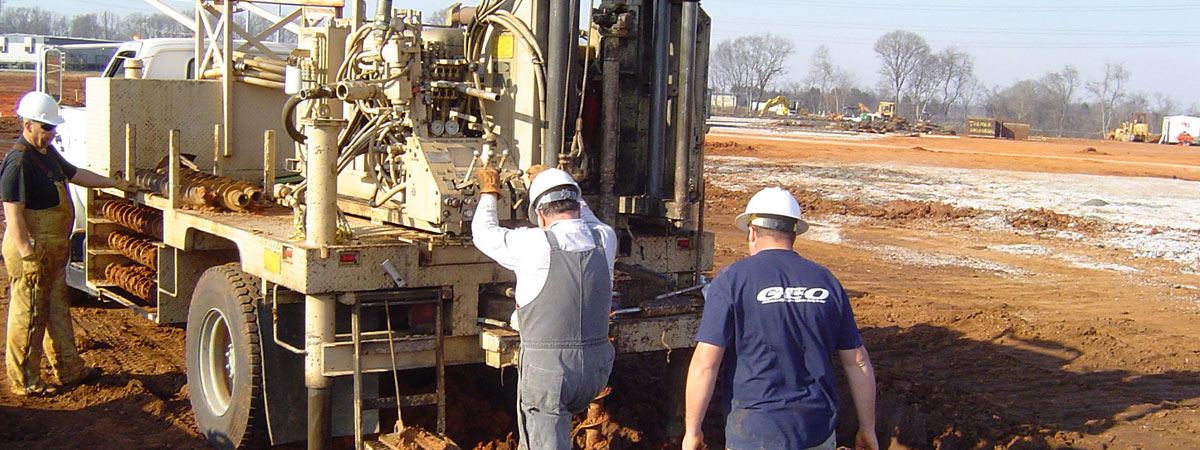Top Geotechnical Engineers for Cutting-Edge Dirt Evaluation and Structure Design
Top Geotechnical Engineers for Cutting-Edge Dirt Evaluation and Structure Design
Blog Article
The Interdisciplinary Approaches in the Geotechnical Industry: Bridging the Void Between Design, Geology, and Environmental Scientific Research for Ideal Job Outcomes
The assimilation of design, geology, and ecological scientific research within the geotechnical sector is not merely useful; it is imperative for achieving optimum job outcomes. What methods might arise to promote this important collaboration and improve the efficacy of geotechnical methods?
Importance of Interdisciplinary Partnership
The significance of interdisciplinary collaboration in the geotechnical sector can not be overemphasized. Efficient geotechnical jobs call for the integration of varied competence from various areas, including design, geology, and ecological scientific research. This partnership makes sure that all facets of a task are considered, bring about thorough options that attend to complex challenges.
When working in isolation,Interdisciplinary partnership promotes innovation by enabling experts to share insights and methodologies that may not be evident. By leveraging the staminas of several techniques, groups can identify potential risks, maximize layout procedures, and enhance the sustainability of geotechnical tasks. Additionally, such partnership promotes an alternative understanding of site-specific conditions, which is crucial for accurate evaluation and decision-making.
The intricacy of geotechnical tasks necessitates a collaborated method to analytic. When designers, rock hounds, and ecological researchers function together, they can develop a cohesive approach that aligns technological needs with ecological factors to consider and regulatory compliance. This harmony not just enhances task results yet also adds to the long-lasting strength of infrastructure. Eventually, interdisciplinary partnership is necessary for progressing best techniques and accomplishing excellence in the geotechnical market.
Trick Functions of Each Self-control
Cooperation among numerous techniques is not just advantageous; it is crucial for the effective execution of geotechnical projects. Each self-control-- engineering, geology, and environmental scientific research-- plays a distinctive yet interconnected duty that adds to project efficacy and sustainability.
Geotechnical designers are mainly accountable for making foundations and making certain architectural integrity. They evaluate dirt and rock homes to analyze load-bearing capabilities, supplying important data for risk-free building and construction techniques. Their expertise makes it possible for the formula of ingenious services to complex challenges.

Ecological researchers assess the prospective influences of building on communities and water sources. They carry out environmental evaluations and develop mitigation techniques to reduce negative impacts. By incorporating ecological factors to consider, they ensure conformity with laws and promote sustainability throughout the project lifecycle.
Study of Successful Integration
Successful combination of geotechnical disciplines can be exhibited via numerous situation studies that highlight the effectiveness of teamwork in addressing complex engineering challenges. One remarkable example is the building and construction of the Hong Kong-- Zhuhai-- Macau Bridge, where a collective strategy entailing geotechnical design, geology, and environmental science was critical. Geologists and designers operated in unison to analyze the seabed problems and enhance the structure layout, making certain security and minimizing environmental impact.
Another impactful instance is the improvement of slope security in the San Francisco Bay Area, where an interdisciplinary team incorporated geotechnical evaluation with environmental evaluations. By integrating hydrological researches and geological studies, the team effectively identified prospective landslide dangers and implemented efficient mitigation measures, boosting safety and security and sustainability.
In addition, the redevelopment of Brownfield sites typically requires a multidisciplinary strategy. In one case in Chicago, cooperation amongst geotechnical designers, environmental researchers, and urban organizers led to the effective removal of infected soil, enabling the safe transformation of the site into a community park. These instance studies illustrate that interdisciplinary collaboration not only addresses technical difficulties but also promotes ingenious solutions that benefit both communities and projects.
Difficulties in Multidisciplinary Projects

In addition, coordinating schedules and process among numerous teams can be bothersome, especially when each technique has distinct project turning points and deliverables. This misalignment can result in delays and raised prices. The challenge of resource appropriation additionally impends big; making sure that specialized proficiency is readily available at vital times requires careful planning and foresight.
Finally, regulative conformity poses one more substantial difficulty. Each self-control may face different regulatory structures, and straightening these demands to meet project purposes can be complicated and lengthy. Attending to these challenges necessitates strong management and efficient interaction approaches to promote collaboration and make sure that multidisciplinary groups function cohesively towards shared objectives.
Future Trends in Geotechnical Practices
As the geotechnical sector develops, emerging patterns are reshaping practices to deal with the difficulties encountered in multidisciplinary jobs - consulting engineer. One considerable pattern is the boosted assimilation of advanced modern technologies, such as expert system and machine discovering, into geotechnical evaluation and layout. These modern technologies boost anticipating modeling and threat analysis, enabling designers to make even more enlightened decisions throughout the project lifecycle

Furthermore, the adoption of digital twins and real-time monitoring systems is coming to be more prevalent. These tools facilitate ongoing assessment of soil problems and architectural performance, enabling for prompt treatments when issues arise.
Conclusion
To conclude, the assimilation of design, geology, and ecological science is crucial for next accomplishing optimal outcomes in the geotechnical market. Interdisciplinary partnership cultivates technology, boosts problem-solving capabilities, and straightens technical requirements with environmental sustainability. Effective study highlight the advantages of this technique, while recognizing the difficulties faced in multidisciplinary tasks. Looking ahead, accepting these joint practices will be crucial for browsing future patterns and advancing the area of geotechnical design.
The combination of design, geology, and environmental scientific research within the geotechnical market is not merely beneficial; it is critical for achieving ideal job end results. Effective geotechnical jobs need the combination of diverse know-how from different fields, including design, geology, and environmental science.Navigating the intricacies of multidisciplinary jobs in the geotechnical market presents a number of substantial obstacles.As the geotechnical sector progresses, emerging fads are improving practices to attend to the obstacles dealt with in multidisciplinary jobs. Geotechnical designers are progressively working together with environmental researchers to make certain that projects line up with sustainability goals and comply with regulatory needs.
Report this page